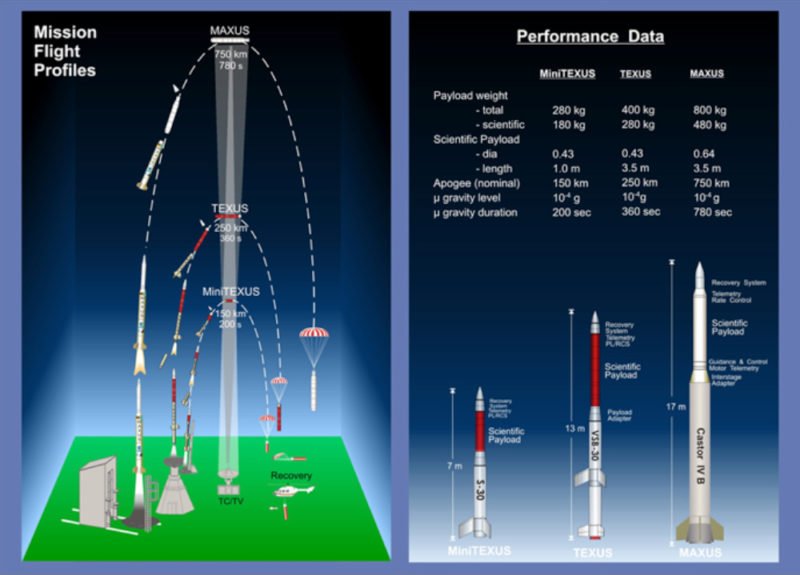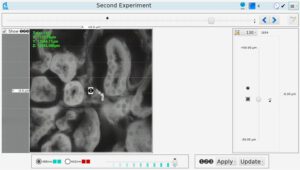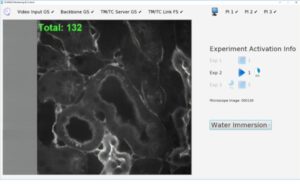Ensuring Meaningful Scientific Research Data from Space
Industry
Aeronautics
Year Founded
2014
Product
Hazelcast Platform
Airbus Defence and Space is a division of Airbus responsible for defense and aerospace products and services. With its presence in 35 countries, the company employs 40,000 people from 86 nationalities and contributes to 21% of Airbus revenues. Its Space Systems business line is working on a broad variety of space projects and programs, such as for example the European contribution to the International Space Station, the European Service Module for the Orion spacecraft, and a large number of communication and scientific satellite programs.
Background
Airbus is an international pioneer and leader in the aerospace industry. Airbus designs, manufactures, and delivers aerospace products, services, and solutions to customers around the world.
The Airbus Defence and Space division works on several exciting space projects. One of them is the sounding rocket program TEXUS (Technische Experimente unter Schwerelosigkeit, Technical Experiments in Microgravity) for microgravity research. TEXUS is funded by the German Aerospace Center (Deutsches Zentrum für Luft- und Raumfahrt e.V., or DLR) on behalf of the German government and has been operational since 1977. More than 70 TEXUS missions (including variants) have been carried out at the ESRANGE (European Space and Sounding Rocket Range) space center in Kiruna so far. With an apogee of 250 km, a TEXUS mission provides about 6 minutes of experiment time under microgravity conditions. The MiniTEXUS and MAXUS mission variants are characterized by lower respectively higher apogees and shorter respectively longer microgravity durations. Since the TEXUS mission 6 ESA (European Space Agency) joined the TEXUS program as an important customer for scientific payloads and has funded all MAXUS missions.
FLUMIAS (Fluorescence Microscope Applications in Space) is a scientific TEXUS payload that was funded by DLR and developed by Airbus in close collaboration with FEI Munich GmbH (formerly TILL Photonics, now part of ThermoFisher Scientific) to provide scientists with a facility to conduct cell research under microgravity conditions. It has been successfully flown on the TEXUS missions 52 and 54.
The Airbus division’s Data Engineering department supplies the hardware and software that the mission teams need to do their jobs. In the frame of the FLUMIAS project, the software engineering team developed the software that lets scientists ensure that meaningful scientific data is obtained when the payload operates under microgravity conditions during the mission. While data and video is downlinked to ground, scientists can specify the necessary adjustments to experiment settings during the mission.

Running experiments and collecting data on sounding rockets is a fine-tuned process, and part of that process entails making adjustments to experiments along the way. For the FLUMIAS payload, scientists need to make sure that captured images are in focus to provide the most value to all stakeholders. And for any given mission, there are usually distinct teams of scientists running experiments, so the system needs to switch between these different experiments to visualize the images and data relevant for the respective teams, enabling them make the appropriate adjustments.
The Airbus Defence and Space software engineering team sought a technology that was easy to understand and could fit within their infrastructural requirements. While there were many potential candidates in the market, it was uncommon to find one that had a suitable programming model with solid documentation. They didn’t have the time to get up to speed on unnecessarily complex systems. And with all the other mission support activities that they were responsible for, the team didn’t necessarily have the time to do extensive research to find an ideal technology.
The Hazelcast Solution
The software engineering team knew what they needed in a technology, and when they read about Hazelcast in a developer-oriented website, it seemed like a great fit. As an in-memory computing platform, Hazelcast is designed for extremely high throughput and low latency environments, though the key benefit for Airbus was the ease of use as a data management platform. The Hazelcast interface offered support for distributed data types that are very familiar to software engineers, so there was no steep learning curve to overcome. This made Hazelcast easy to integrate into the ground infrastructure for sounding rocket systems. The fact that the software was well-documented also contributed to the ease of use.
Another key design principle of Hazelcast is architectural simplicity, so it can be run in any environment, including those with small hardware footprints, and embedded in applications without any external dependencies that can add bloat to a system. The in-memory model helped reduce complexity by removing a direct dependency on hard drive accesses. The distributed architecture offers fast access to data from any of the nodes, or from any client machine connecting to the Hazelcast cluster.
Another requirement for Airbus was cross-platform support. They worked with Java, but part of the system had to interact with .Net/C#, so support for both environments, as well as other programming languages, made Hazelcast appealing.

Customer Success
Communication within the FLUMIAS ground segment is performed exclusively by Hazelcast. It consists of five elements:
- Distribution of digital images extracted from the converted analog video signal (only the image part showing the microscope view is used).
- Distribution of processed telemetry data obtained from the flight segment.
- Collection of experiment settings and engineering commands for processing and transmission to the flight segment.
- Distribution of health and connection status data for communication link and ground system elements.
- Distribution of experiment configuration data (experiment name, predefined position and laser illumination level settings) for the PI stations.
 Hazelcast was used in both TEXUS missions that included the FLUMIAS experiment, and worked out well both times. It was used in the ground segments to connect ground stations between scientists and the engineering support team that controlled the overall setting and proper functioning of the microscope. It was part of the system that helped to ensure meaningful scientific data was obtained by allowing the necessary adjustments to experiment settings during the mission. Specifically, it contributed to the payload support system that allowed scientists to adjust settings of the confocal laser scanning microscope during the flight of the sounding rocket. It was used to ensure that images taken by the microscope were in focus and produced scientific value for the observers or scientists.
Hazelcast was used in both TEXUS missions that included the FLUMIAS experiment, and worked out well both times. It was used in the ground segments to connect ground stations between scientists and the engineering support team that controlled the overall setting and proper functioning of the microscope. It was part of the system that helped to ensure meaningful scientific data was obtained by allowing the necessary adjustments to experiment settings during the mission. Specifically, it contributed to the payload support system that allowed scientists to adjust settings of the confocal laser scanning microscope during the flight of the sounding rocket. It was used to ensure that images taken by the microscope were in focus and produced scientific value for the observers or scientists.
Furthermore, it provided situational awareness and system health information to the engineering support team.
 The FLUMIAS experiment facility was shared between three groups of scientists who carried out sub-experiments of their own. Although not the preferred solution for each group of scientists the approach to share the experiment hardware was the optimal solution based on the large demand of the scientific community for such a high-resolution live-cell imaging system and on the high cost inherent with bringing the FLUMIAS experiment facility to space. So the system Airbus designed was responsible for switching between the sub-experiments and allowing scientists to make proper adjustments of their settings, e.g., changing their actual field of view or the intensity of the laser light.
The FLUMIAS experiment facility was shared between three groups of scientists who carried out sub-experiments of their own. Although not the preferred solution for each group of scientists the approach to share the experiment hardware was the optimal solution based on the large demand of the scientific community for such a high-resolution live-cell imaging system and on the high cost inherent with bringing the FLUMIAS experiment facility to space. So the system Airbus designed was responsible for switching between the sub-experiments and allowing scientists to make proper adjustments of their settings, e.g., changing their actual field of view or the intensity of the laser light.